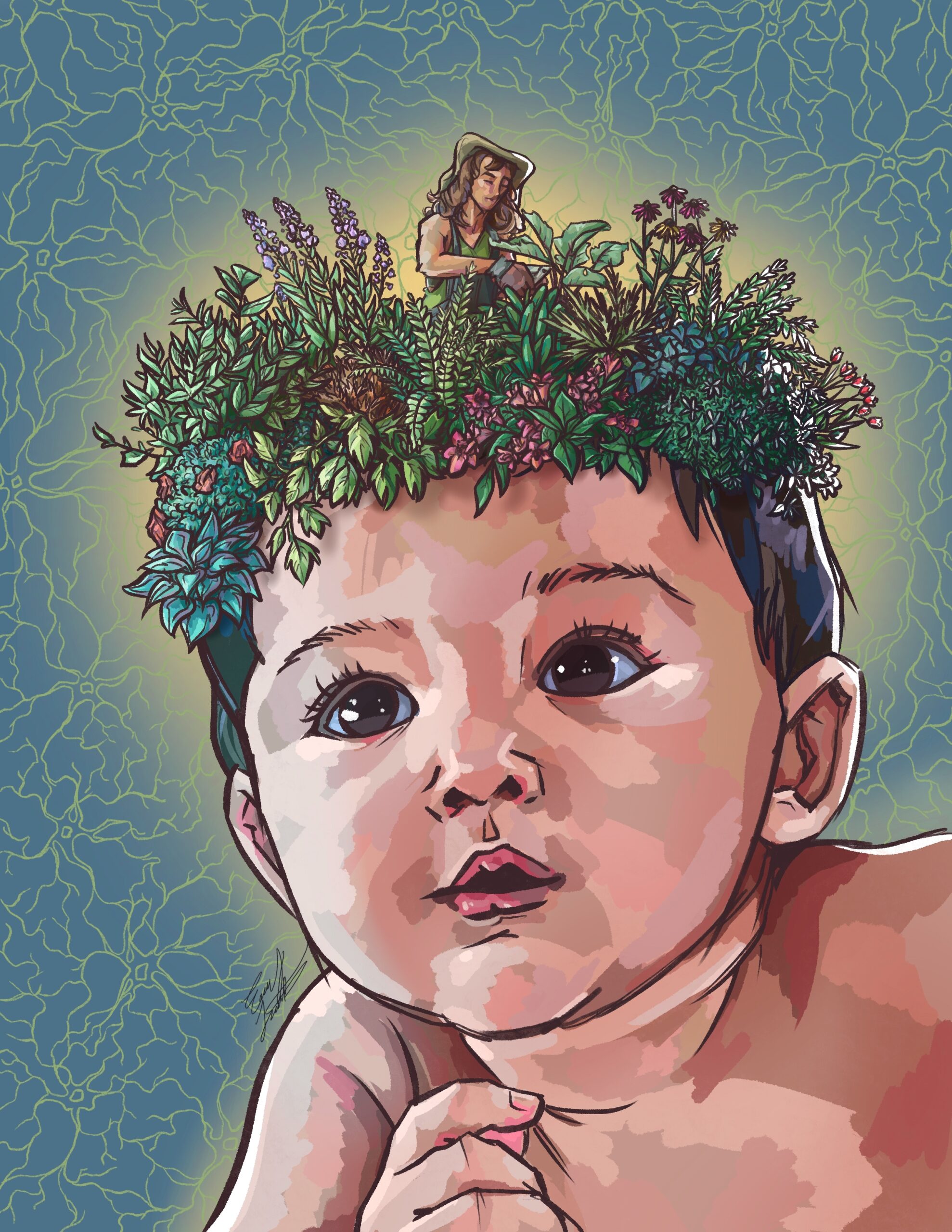2024 Best in Drawing/Digital Drawing – Emerson Lauster

“Pruning”
Digital freehand drawing
Abstract
This drawing, entitled “Pruning”, is meant to represent the concept of Synaptic Pruning that occurs in the brain during early development. Synaptic Pruning is the process of removing excess brain cells, or neurons, and their connections from the brain’s network, thereby allowing strong connections to grow stronger. Here, the process acts as a gardener clipping away unnecessary ends to strengthen the already established flora. While this process takes place in neurotypical development, there is a distinct lack of synaptic pruning in individuals with neurodivergent disorders such as Autism Spectrum Disorder and Attention Deficit [Hyperactive] Disorder.
Synaptic Pruning is the neurological process of removing excess neural connections within the brain during human development. This is a normal part within childhood development, typically taking place between the ages of two years to ten years old. During embryonic stages, neurons first began to rapidly develop and connect. Once they reach the age of two, the number of neurons surpass the level of necessity for the brain—this insights the synaptic processing. The neuron pathways not used or rarely used begin to lose their connections, prioritizing the cells that are readily and continually activated.
Recent research has found a correlation between neurodivergent disorders and lack of Synaptic Pruning. Neurodivergent disorders are characterized by differences in neurological and mental functions and include disorders such as Autism Spectrum Disorder, Attention Deficit [Hyperactive] Disorder, Dyslexia, and Obsessive Compulsive Disorder. They have found evidence to suggest that a physical characteristic associated with many of these disorders is an unusually high level of synaptic connectivity in the brain. This results from a lack of synaptic pruning occurring during early childhood development and may lead to the non-typical mental patterns displayed by most neurodivergent people.
In this digital freehand drawing, the small child is on the cusp of entering the neuro-developmental stage of synaptic pruning. The garden growing from the top of their head is overflowing with plants and flowers, symbolizing the excess amounts of neurons in their brain. The gardener above acts as the aging processes, commencing to prune the overgrowth of the child’s brain cells. Behind the subjects, the background depicts representative images of neurons tangling and intertwining with one another as they do in the brain. The art itself is composed of 43 overlapping layers, using different textured brushes, and was created referencing human subjects, various plant types, and figures showing different interpretations of neural systems.
